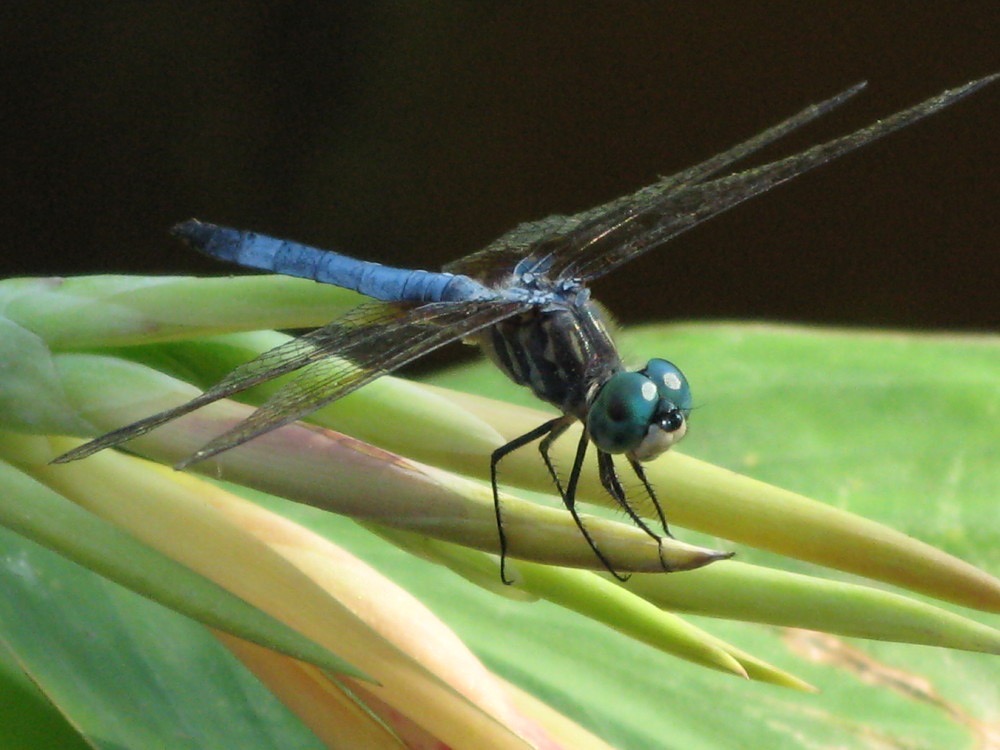Dragonflies in the Garden by John Sanger, Hunt County Master Gardener
One of the most rewarding aspects of gardening is enjoying the many wild creatures that come to visit. Some of my favorite visitors are dragonflies. They are fascinating to watch and photograph.
The fossil record tells us that the ancient ancestors of dragonflies were around long before the dinosaurs, and some of these insects had wingspans of more than two feet! Fortunately today’s dragonflies are much smaller. There are more than 160 species of dragonflies found throughout Texas, and they come in an incredible variety of brilliant colors, shapes and sizes.
Dragonflies are beneficial insects that prey on other flying insects such as mosquitoes, flies, gnats and flying ants. They grasp their prey with their legs in flight and eat while airborne.
Dragonflies are amazing flyers and can hover in place, or fly forwards, backwards or straight up, much like a helicopter. They are among the fastest flying insects, and can fly for hours on end without resting. If you are lucky, you might see a dragonfly swarm – a large group of adult dragonflies feeding on a large population of gnats or other flying insects. It is quite an impressive display of aerial acrobatics!
Dragonflies spend most of their lives in and around water. The adult dragonfly lays eggs in the water or on water plants. The eggs hatch and the nymphs grow and molt for several months to several years, feeding on aquatic insects, tadpoles and even small fish.
After 9-14 molts through stages called instars, the nymph emerges from the water onto land, its exoskeleton breaks open and the adult dragonfly emerges and extends its wings. Once the wings dry and harden, the dragonfly can take flight. Adult dragonflies can live from a few weeks to one year.
The best way to attract dragonflies is to incorporate a water feature into your landscape. Ponds give dragonflies a place to lay their eggs, and submerged vegetation gives dragonfly larvae places to hide. Plants around the edges of the pond give larvae places to crawl when emerging to molt into adults. A larger pond will support a greater variety of dragonflies and will provide more hiding places for larvae – especially important if fish are present.
If you don’t already have one, consider adding a water feature to your landscape. It can attract dragonflies to your property, as well as a great variety of other wildlife. Take the time to welcome and study these amazing beneficial insects as they visit your garden. They are truly a wonder of nature.
